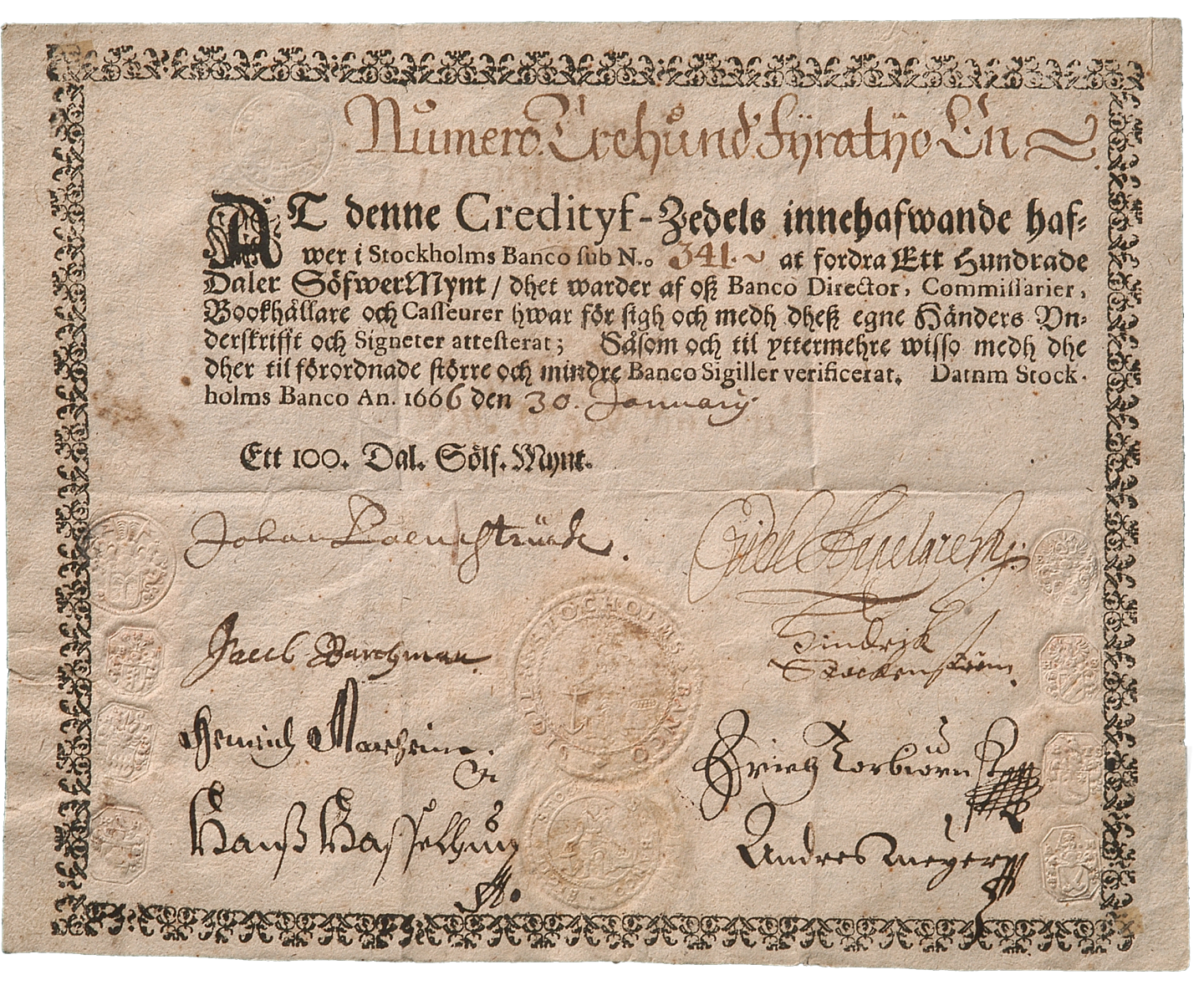1661 - First banknotes in Europe

Stockholms Banco issued the first real banknotes in Europe. They were a great success, but it all ended in a bank failure.
It was Johan Palmstruch, founder of Stockholms Banco, Sweden's first bank, who issued the banknotes. The background to this was that, in 1660, the central government had started to mint new coins of a lower weight than the older ones. This meant that many depositors wanted their old, heavier coins back, as they had a higher metal value. This led to a bank run. To counteract this, Palmstruch started to issue deposit certificates. This was a security that gave the owner the right to withdraw the deposited amount in coins.
The special thing about the deposit certificates, which were called credit notes, was that the bank was no longer dependent on having money deposited to be able to lend. Instead, the new certificates were handed out as loans from the bank. They could be used to purchase anything and so the first banknotes in Europe were invented.
The new thing about Palmstruch's banknotes was that they were not linked to any deposit. Instead, they were based on the general public's confidence that the bank would pay the value of the note in coins upon demand.
The banknotes quickly became popular as they were more convenient than the heavy and cumbersome coins made of copper. During the following years, the bank printed more and more notes. This led towards them falling in value, a phenomenon we now know as inflation. Confidence was finally lost among the general public and many people demanded that their notes be redeemed. But Stockholms Banco did not have enough coins and therefore started to demand the loans it had granted be repaid. It ended with a bank failure and many people suffered financial problems.
The Council of the Realm – the government of the time – decided in 1664 that the loans would be repaid and that the credit notes would be withdrawn. Palmstruch was ordered to appear before the Svea Court of Appeal and was sentenced to death for mismanagement of the bank in 1668. He was reprieved but remained in prison until 1670 and died the following year.
